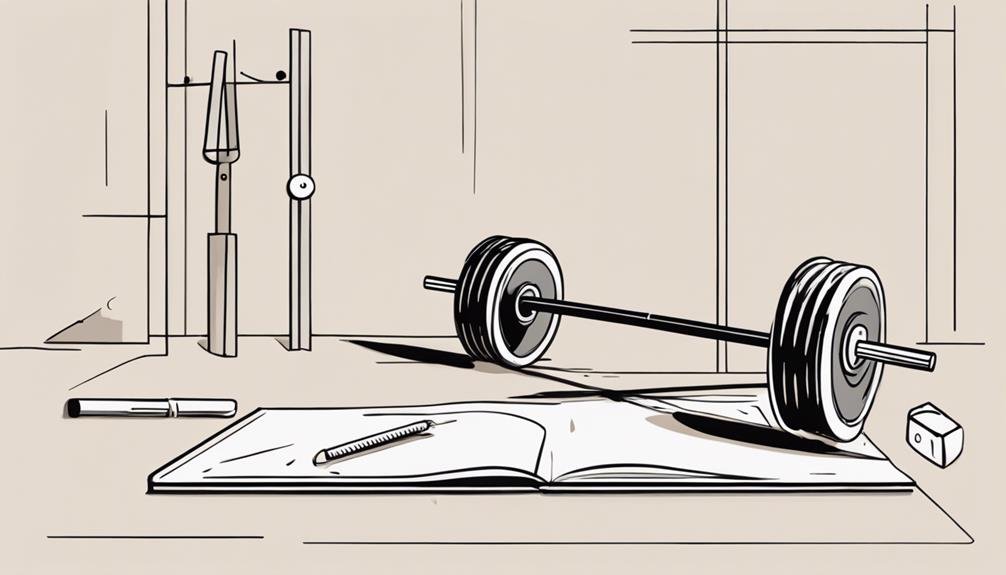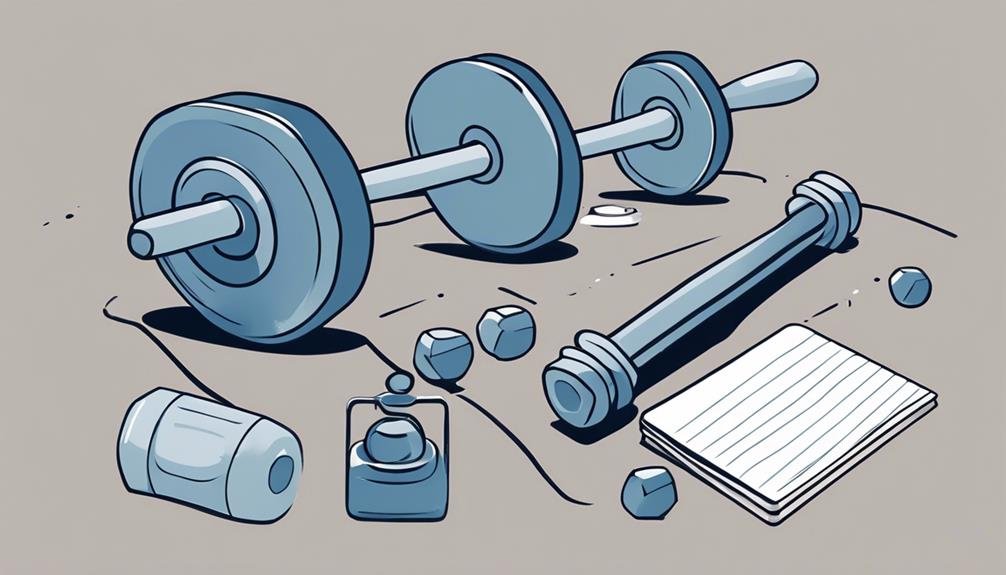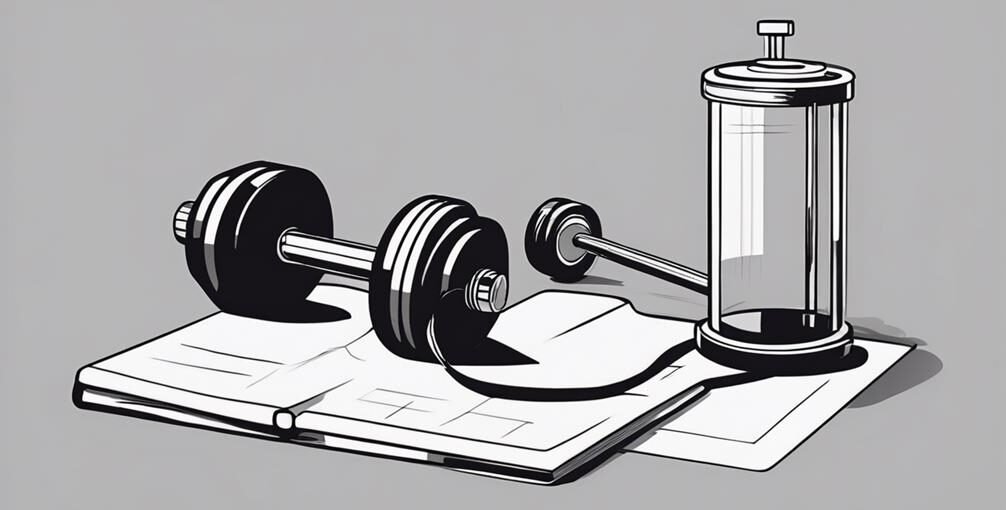Progressive Overload Strategies for Men Over 40
To effectively implement progressive overload as a man over 40, start by evaluating your current strength through exercises targeting major muscle groups. Gradually increase weights in small increments of 2.5 to 5 pounds, focusing on maintaining proper form. Mix up your rep ranges to engage different muscle fibers—aim for 4-12 reps depending on your goals. Incorporate bodyweight exercises and variable resistance techniques to keep your workouts challenging. Don't forget to track your progress consistently to stay motivated. Pay attention to recovery and nutrition, too; they're essential for ongoing success. There's plenty more to explore to maximize your fitness journey.
Key Takeaways
- Regularly assess strength levels through functional movements to identify areas for improvement and track progress effectively.
- Gradually increase weights by 2.5 to 5 pounds once target reps are achieved with proper form to prevent injury.
- Vary rep ranges: aim for 4-6 for strength, 8-12 for hypertrophy, and 15+ for endurance to target different muscle fibers.
- Incorporate bodyweight exercises and advanced variations to enhance strength and maintain engagement without risking injury.
Importance of Progressive Overload
Progressive overload is essential for building strength and muscle as you age, ensuring your workouts remain effective and prevent plateaus.
It's all about gradually increasing the demands on your body, whether that means lifting heavier weights, increasing reps, or reducing rest time.
By pushing your limits, you stimulate muscle growth and enhance your overall strength.
This principle helps you adapt to the physical changes that come with aging, keeping your body resilient and functional.
Without progressive overload, your muscles can stagnate, and you might feel less motivated to continue your fitness journey.
Assessing Your Current Strength

To effectively implement progressive overload, you should regularly evaluate your current strength levels to identify areas for improvement.
Start by performing a series of exercises that target major muscle groups, such as squats, deadlifts, and bench presses. Record the amount of weight you can lift for a set number of repetitions. This gives you a baseline to measure your progress.
Additionally, consider incorporating functional movements like push-ups and pull-ups to assess overall strength. It's also helpful to take note of how you feel during these exercises, as fatigue or discomfort can indicate imbalances or weaknesses.
Incremental Weight Increases
Incorporating incremental weight increases into your routine is crucial for continued strength gains as you age.
Start by selecting a weight you can lift comfortably for your target reps. Once you can perform those reps with good form, it's time to add weight.
Aim for small increments, usually between 2.5 to 5 pounds, to avoid overloading your muscles too quickly. This gradual approach helps prevent injury and allows your body to adapt effectively.
Track your progress to stay motivated and guarantee you're consistently challenging yourself.
Don't forget to listen to your body; if you feel fatigued or experience discomfort, take a step back.
This strategy will support long-term strength development and help you maintain functionality as you age.
Adjusting Reps and Sets

Adjusting reps and sets can complement your incremental weight increases, ensuring your workouts remain effective as you age.
As you progress, consider varying your rep ranges to target different muscle fibers. For strength, aim for 4-6 reps; for hypertrophy, focus on 8-12 reps; and for endurance, try 15 or more.
You can also manipulate sets by increasing the total number or changing the structure, such as incorporating supersets or drop sets.
Listen to your body and adjust accordingly; if you feel fatigued, reduce the volume to avoid injury.
Incorporating Variable Resistance
Using variable resistance techniques can enhance your workouts by providing a unique challenge that targets your muscles more effectively. You can incorporate resistance bands or chains into your routine, allowing you to increase the load as you complete the lift. This method guarantees that your muscles are always under tension, maximizing engagement throughout the movement.
Start with exercises like squats or bench presses, attaching bands or chains to adjust resistance at different points in the lift. You'll notice improved strength and stability as your body adapts to varying loads.
Utilizing Bodyweight Exercises

Bodyweight exercises offer a versatile way to enhance your strength and endurance while minimizing the risk of injury, making them a great addition to your training routine alongside variable resistance techniques.
You can perform movements like push-ups, squats, and lunges anywhere, allowing for flexibility in your workout schedule.
To implement progressive overload, focus on increasing the number of reps, adding variations, or decreasing rest times between sets. For instance, elevate your feet during push-ups or try single-leg squats to challenge yourself further.
These exercises engage multiple muscle groups, improving functional strength and stability.
As you become more comfortable, you can incorporate advanced variations to keep your workouts exciting and effective, ensuring continuous progress in your fitness journey.
Tracking Progress Effectively

To see real improvements in your fitness, it is crucial to track your progress consistently and accurately. This means recording your workouts, weights, and repetitions. By doing this, you can identify trends in your performance and adjust your training accordingly.
Here's a simple table to help you keep track of your progress:
| Date | Exercise |
|---|---|
| 2023-01-01 | Bench Press: 150 lbs for 8 reps |
| 2023-01-08 | Bench Press: 155 lbs for 7 reps |
| 2023-01-15 | Bench Press: 160 lbs for 6 reps |
Use this method for all your exercises. Regularly reviewing your data helps motivate you and encourages you to push your limits, ensuring you're on the right path to progressive overload.
Prioritizing Recovery and Nutrition

Prioritizing recovery and nutrition is essential for maintaining peak performance and preventing injuries as you age. Your body needs adequate time to recover and the right nutrients to support muscle growth and overall health.
Here are four key strategies to enhance your recovery and nutrition:
- Get Enough Sleep: Aim for 7-9 hours of quality sleep each night to promote muscle repair and hormonal balance.
- Stay Hydrated: Drink plenty of water throughout the day to support metabolic functions and recovery.
- Focus on Protein: Include lean proteins in your diet to help rebuild muscle tissue after workouts.
- Incorporate Rest Days: Schedule regular rest days to allow your muscles to recover and prevent overtraining.
Implement these strategies for ideal results!
Questions
Can I Use Resistance Bands for Progressive Overload?
Yes, you can definitely use resistance bands for progressive overload. By increasing the band's tension or adding more repetitions, you'll effectively challenge your muscles and promote strength gains. Just make certain you're maintaining good form throughout your workouts.
How Often Should I Change My Workout Routine?
Think of your workout like a garden; if you keep planting the same seeds, growth slows. Change your routine every 4 to 6 weeks to keep your body challenged and flourishing. Variety keeps things exciting!
Should I Focus on Cardio or Strength Training First?
You should prioritize strength training first, as it builds muscle and boosts metabolism. Once you establish a solid foundation, incorporate cardio to enhance endurance and heart health. Balancing both leads to ideal fitness results.
What Injuries Should I Be Cautious of Over 40?
Injuries over 40 can creep up like shadows at dusk. You should be cautious of joint pain, muscle strains, and tendinitis. Staying aware of these issues helps you maintain a safe and effective workout routine.
Is It Necessary to Warm up Before Workouts?
Yes, it's necessary to warm up before workouts. Warming up increases blood flow, reduces injury risk, and prepares your muscles for exercise. Skipping this step can lead to strains and decreased performance during your workout.
Conclusion
In your fitness journey, think of progressive overload as planting seeds in a garden.
With each small increase—whether it's weight, reps, or recovery—you're nurturing your growth.
As you cultivate this strength, watch your body flourish like a vibrant landscape.
Don't forget to track your progress, as it's the sunlight that guides your path.
With patience and dedication, you'll transform into the strongest version of yourself, blooming beautifully at every stage of life.
Keep nurturing that garden!

